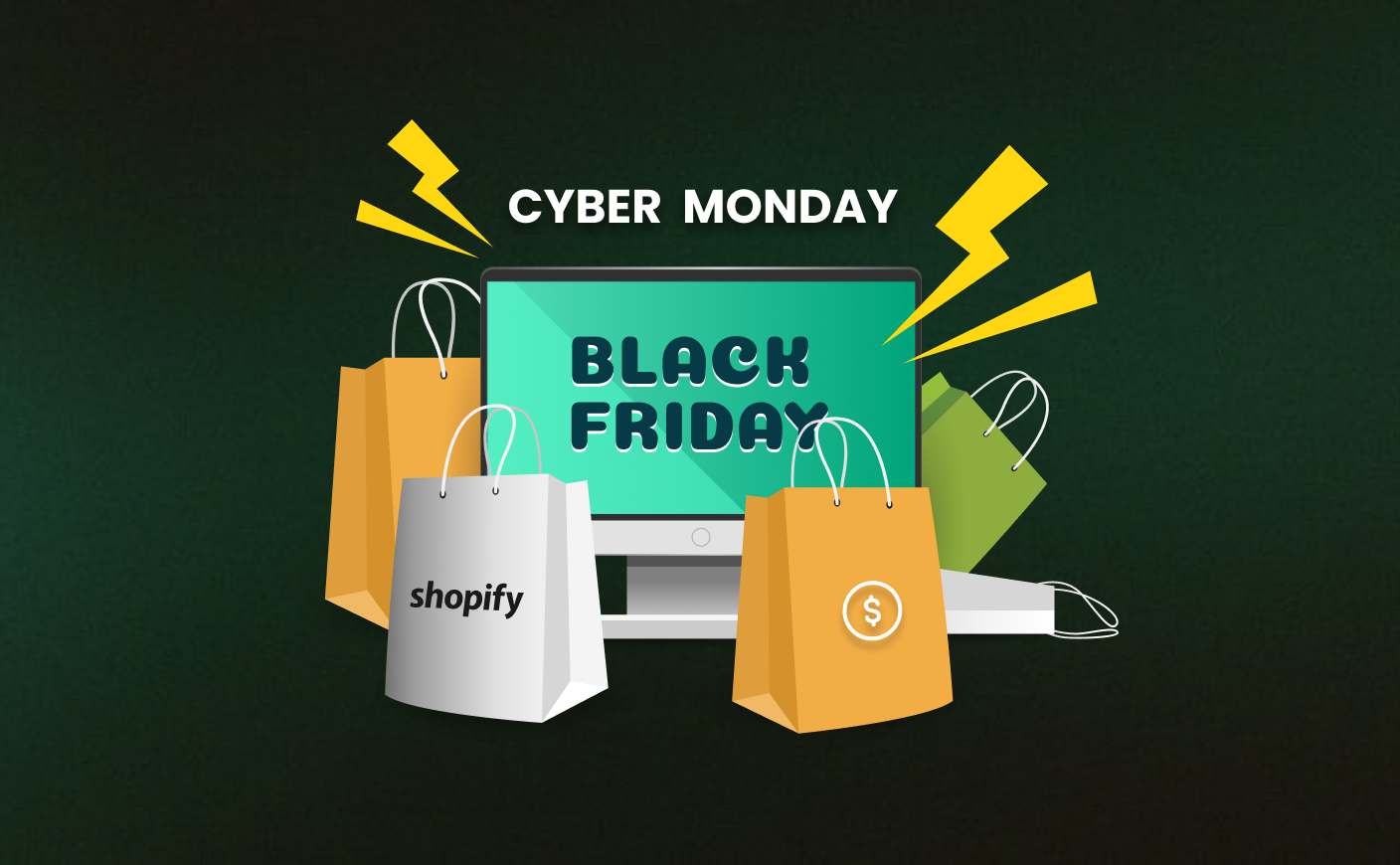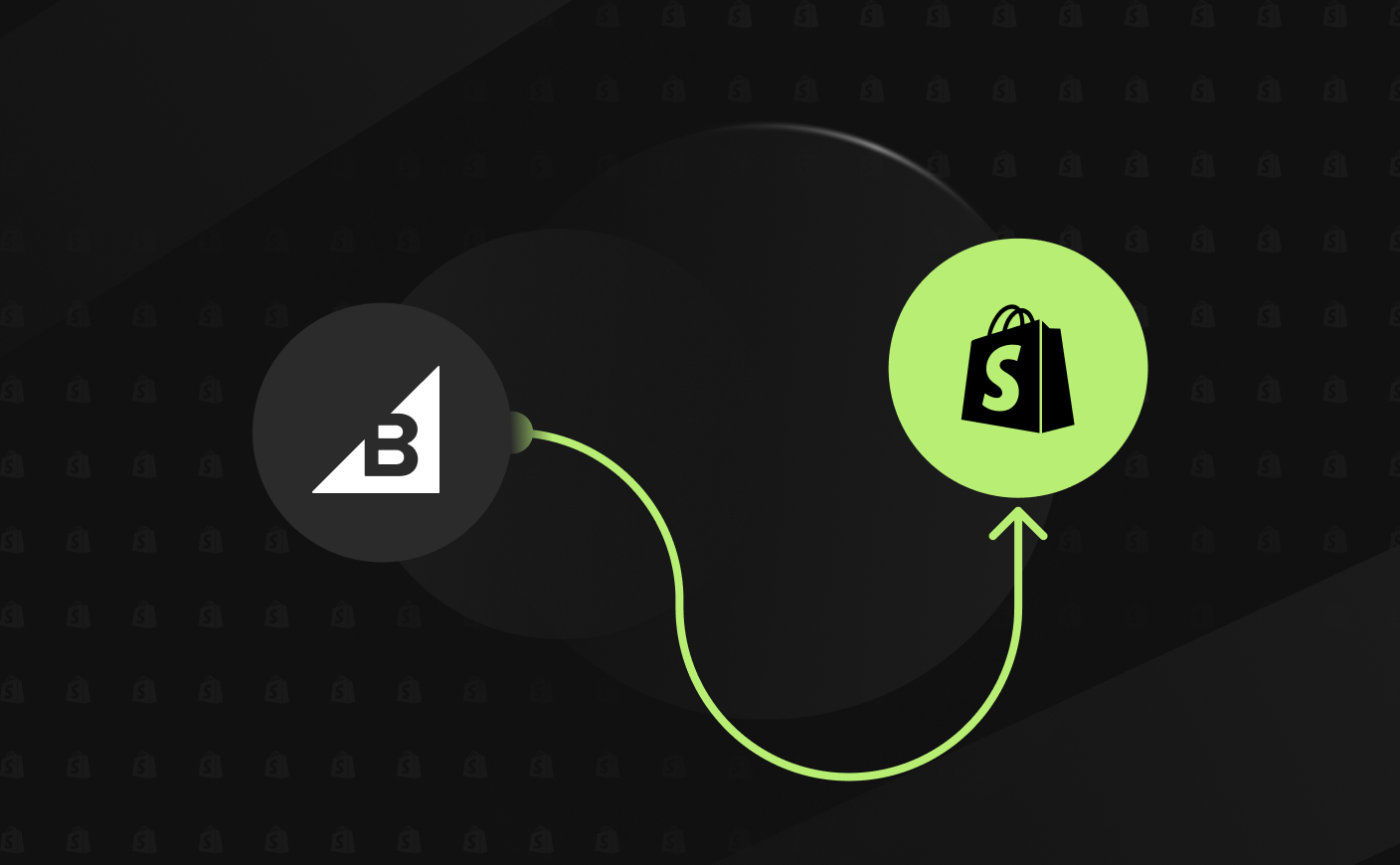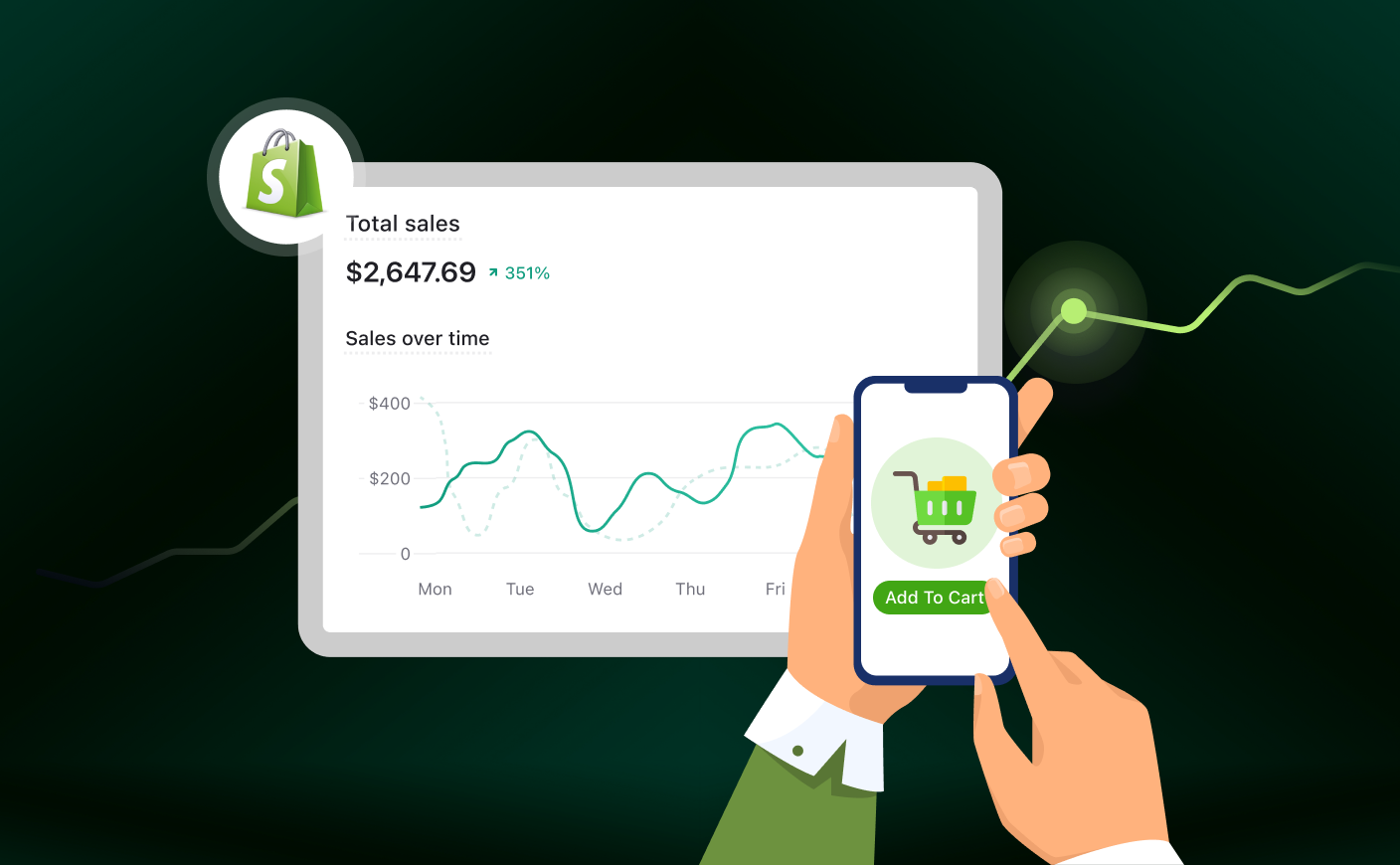Boost Ecommerce Sales With Simple Link Building Tricks
Ecommerce Sales
Link Building
SEO

Imagine this - you have an amazing ecommerce store with amazing products, but not enough people can find it. Frustrating right? The truth is no matter how good your store is, you won’t get sales if it is not visible to your target audience.
This is where link building can help.
Link building is a simple yet powerful way to improve your store’s presence on search engines. When other trusted websites link to your store, search engines see it as a sign that your site is valuable and relevant. As a result, your rankings improve, bringing in more visitors—and more visitors mean more sales!
But link building doesn’t have to be complicated or time-consuming. With the right tricks, you can get quality backlinks that drive real results.
Top 5 of Benefits Ecommerce Link Building
Why link building should be an integral part of Shopify SEO. Let’s check.
Improved Search Engine Rankings
Pages ranking number one on Google have an average of 3.8 times more backlinks than those in positions two to ten.
Increased Organic Traffic
Higher search rankings lead to more visibility and clicks. Websites with 30 to 35 backlinks generate over 10,500 visits per month.
Enhanced Brand Authority and Credibility
Quality backlinks from reputable sites position your brand as a trusted authority. Approximately 93.8% of link builders prioritize link quality over quantity, emphasizing the importance of earning backlinks from leading websites in your industry.
Increased Referral Traffic
Backlinks drive direct visitors from other sites. For instance, during Cyber Monday 2024, influencers and affiliate marketers drove about 20% of U.S. ecommerce revenue through referral links.
Competitive Advantage
Approximately 94% of online content doesn't receive external links, and only 2.2% gets links from multiple sites. By actively building backlinks, your ecommerce site can stand out in search results.
Top 7 Simple Tricks To Build Links In Ecommerce
We will discuss top 7 simple strategies that are not only effective but easy to implement. Following these tips will ensure that your Shopify store gets the attention it deserves.
#1 Create High-Quality, Shareable Content
It is often said that “content is king,” and for a good reason. When you create high-quality, engaging content, you’re not only offering value to your audience but also increasing the chances of attracting backlinks naturally.
But what exactly makes content “shareable”? It’s all about providing value in a way that resonates with your audience. Long-form content, such as detailed guides, how-to articles, and case studies, tends to perform the best.
In fact, research shows that long-form content generates 77.2% more backlinks than shorter articles.
Why Does Long-Form Content Work?
In-depth Information: Long-form content provides the opportunity to go deeper into a subject, offering more insights and answering a wider range of questions. This makes your content a valuable resource for people seeking comprehensive answers.
Better for SEO: Longer articles are often better optimized for keywords, which makes it easier for search engines to rank them. The higher the ranking, the more likely others are to link to it.
More Shareable: The more detailed your content is, the more likely others in your industry are to share it as a resource. This creates a snowball effect—more shares lead to more backlinks.
How to Create Shareable Content
Understand Your Audience: The first step to creating shareable content is knowing who you're speaking to. What are their pain points? What are they searching for? Use this information to create content that truly adds value.
Include Visuals: Infographics, charts, and images are highly shareable and help break up text. They make complex information easier to understand and more likely to be shared.
Be Actionable: Provide your audience with actionable takeaways. Offering practical advice or step-by-step instructions makes your content not only informative but also usable.
#2 Leverage Guest Posting
Guest posting has long been one of the most powerful and effective link-building strategies in the ecommerce world. In fact, 64.9% of link builders incorporate guest posting into their overall SEO strategy.
Key Tip for Guest Posting:
Don’t just aim for any blog; make sure the blog you’re contributing to is high-quality and relevant to your target audience. A link from an authoritative website will carry more weight than one from a lesser-known site.
Always prioritize quality over quantity when selecting guest posting opportunities.
#3 Use Influencer Partnerships
Working together with influencers in your niche can revolutionize link-building and ecommerce store traffic. Influencers can provide you with high-quality backlinks in addition to increasing the visibility of your business when they discuss, evaluate, or recommend your products.
To make the most of influencer partnerships:
Choose the Right Influencers: Look for influencers who align with your brand values and have an engaged, relevant audience. Tools like BuzzSumo or HypeAuditor can help you find influencers within your niche.
Offer Value: Instead of just asking for a backlink, provide influencers with an offer that benefits them, such as a free product or exclusive discounts for their followers.
Track Results: Use tools like Google Analytics to monitor how much traffic and how many backlinks you gain from influencer collaborations.
#4 Implement Broken Link Building
Broken link building is a clever and often underused strategy that can work wonders for your e-commerce site. Here’s how it works: You find broken (dead) links on other websites—links that lead to pages that no longer exist—and offer your content as a replacement. It's a win-win for both parties: the website owner gets their broken link fixed, and you get a valuable backlink to your site.
Here’s a step-by-step breakdown of the process:
Find Broken Links
Start by searching for pages in your niche that are no longer active. You can use tools like Ahrefs, Screaming Frog, or Check My Links to quickly identify broken links on relevant websites.
Identify Relevant Content on Your Site
Once you find a broken link, determine if any content on your site is a relevant replacement. For instance, if a blog post was linking to a product review that no longer exists, you can suggest your similar product review as a substitute.
Reach Out to the Website Owner
After identifying a broken link and your relevant content, send a polite email to the website owner. In your message, mention that you found a broken link on their site and suggest your content as a replacement. Be helpful and concise.
Personalize Your Email
Personalization is key. Don’t send a generic message. Address the website owner by name and be specific about which link is broken and why your content is a good fit. The more relevant and helpful you are, the higher the chances of them accepting your suggestion.
Why Does Broken Link Building Work?
Helps Website Owners: Website owners don’t want broken links on their site because they affect user experience and SEO. By helping them fix these links, you’re offering a valuable service.
Provides Quality Backlinks: When the website owner accepts your suggestion, you get a backlink to your content, which improves your site's SEO and visibility.
Earns Credibility: This strategy helps you establish relationships within your niche. Offering valuable help to others can increase your credibility and trustworthiness.
#5 Engage in Link Exchanges
Link exchanges are a time-tested strategy where two websites agree to exchange links with each other. When done right, this can be a highly effective way to build backlinks, improve SEO, and increase traffic.
But here's the catch: not all link exchanges are created equal.
You need to make sure that the websites you partner with are relevant to your niche, reputable, and offer valuable content that aligns with your audience’s interests.
Here’s why this works: Google and other search engines prioritize relevance and trustworthiness in their ranking algorithms. So, when you exchange links with a trusted, relevant website, it tells search engines that your site is a credible source of information in your niche.
In fact, around 51.6% of link builders use link exchanges as a strategy to build their backlink profiles.
Tips for Successful Link Exchanges:
Choose sites that align with your audience: Don’t go for just any site—ensure the site you're exchanging links with offers something valuable to your visitors.
Keep it relevant: Only exchange links with sites that are relevant to your business. A link from a pet store might not add much value if your ecommerce store sells tech gadgets.
Don’t overdo it: Too many link exchanges can raise red flags for search engines, so keep your strategy natural and organic.
Use descriptive anchor text: When exchanging links, ensure that your anchor text is relevant to the content it’s linking to, as this adds more value to both sites.
#6 Offer Testimonials for Backlinks
One of the simplest and most overlooked ways to gain a quality backlink is by offering a testimonial to a supplier, partner, or service provider you've worked with.
Here’s how it works:
When businesses collect testimonials from customers or clients, they often display them on their websites or marketing materials.
This is a win-win situation for both sides—your testimonial helps them build credibility, and in return, you often get a backlink to your site.
These backlinks can not only boost your SEO but also increase your store's visibility in front of an audience that trusts the partner or supplier you're recommending.
Pro Tip:
Start with businesses or services you have a strong relationship with—this increases the likelihood that they’ll feature your testimonial and link back to your website. Aim to build a mutually beneficial relationship that lasts.
#7 Monitor Competitor Backlinks
Understanding where your competitors are getting their backlinks can be a game-changer for your link-building strategy.
By analyzing their backlink profile, you can discover opportunities that you might have missed. Competitor research not only helps you spot gaps in your own strategy but also gives you a chance to target the same sources and even outperform them.
Here’s how you can go about it:
Use Tools Like Ahrefs or SEMrush: These tools are designed to help you track and analyze the backlink profiles of your competitors. By entering your competitor's domain, you can view a list of websites linking to them.
This data allows you to target the same sites and potentially secure backlinks from high-authority sources that are already linking to businesses in your niche.
Identify High-Quality Opportunities: Not all backlinks are created equal. Focus on quality over quantity. Pay attention to the types of websites linking to your competitors—are they industry blogs, authoritative publications, or trusted directories?
These high-quality sites are likely to provide backlinks that will boost your own domain authority.
Find Unlinked Mentions: Some websites might mention your competitors without linking to them. These unlinked mentions are a golden opportunity.
You can reach out to these sites and ask for a backlink to your own site, offering them something valuable in return, like a guest post or an updated resource.
Learn from Their Mistakes: Competitors may also have toxic or low-quality backlinks that harm their SEO efforts. By identifying these, you can avoid similar pitfalls and focus on building only high-quality backlinks for your site.
Frequently Asked Questions:
How can link building increase my Shopify Store’s sales?
Link building helps improve your store’s search engine rankings by earning backlinks from trusted websites. Higher rankings lead to more visibility, driving organic traffic to your store and increasing sales. It’s a key strategy for making your store more discoverable by your target audience.
Are guest posts really worth the effort for Ecommerce stores?
Yes! Guest posts provide high-quality backlinks and exposure to a broader audience. By writing for authoritative blogs relevant to your niche, you increase your store's visibility and drive more traffic, boosting both SEO and sales.
How do I identify good backlink opportunities for My Ecommerce site?
To find good backlink opportunities, create high-quality, shareable content and monitor competitors’ backlink profiles. Use tools like Ahrefs or SEMrush to identify relevant and authoritative sites that can link to your content, and focus on relevance and authority to maximize SEO benefits.
CrawlApps
At CrawlApps, we don’t just build Shopify stores—we create experiences that sell. We’re a bunch of problem-solvers who love turning ideas into stores that actually converts. Whether it’s fixing what’s broken or building something from scratch, we make sure every detail works in your favor. No fluff, no jargon—just real solutions that help your business grow. If you’re serious about Shopify, you’ll feel right at home with us.















